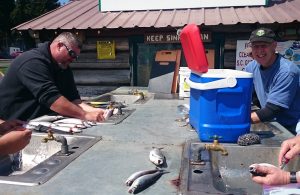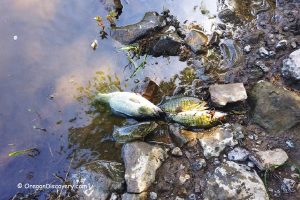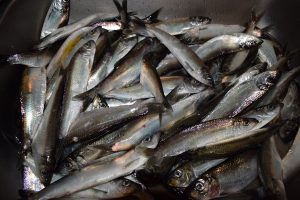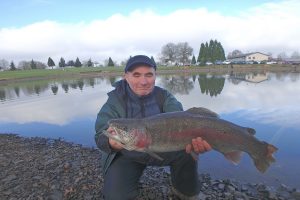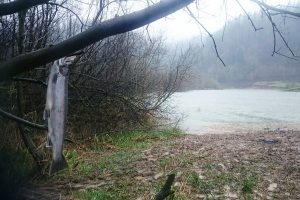
• Northern pikeminnow is a ravenous predator of juvenile salmon and steelhead
• Sport Reward Program provides a chance to earn good money
Northern Pikeminnow, also known as Northern Squawfish, is a native species, a member of the Minnow family that can be found in the Pacific Northwest.
This fish is easily identifiable by its long snout, as well as the fact that it has a large mouth and a dark green and silver body. Pikeminnow preys heavily on juvenile salmon and steelheads.
Difference Between Pikeminnow and Peamouth?
Pikeminnow is often confused with peamouth, but the two are completely different species.
A pikeminnow's head is flatter (mainly between the eyes), while the peamouth's head is rounder. Pikeminnow's snout is longer and larger than peamouth, and its large wide mouth ends at the eye. It has no barbels at the mouth. Distinguishing between the two fish is important. Note that peamouth poses no threat to the ecosystem or any other fish.

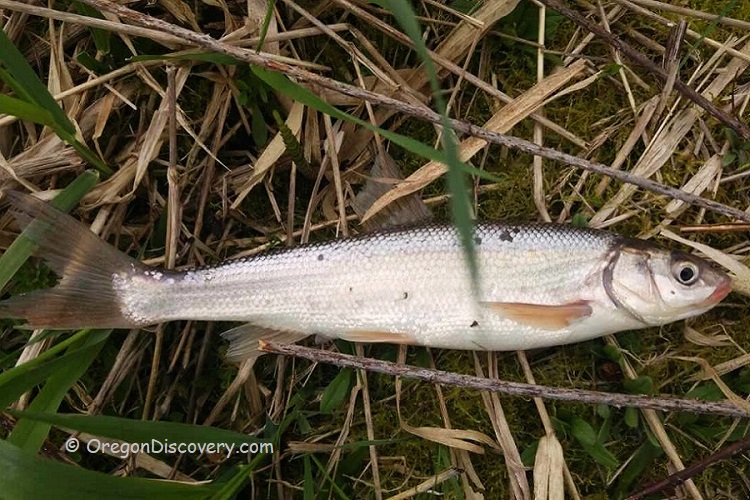
Fishing
When fishing for pikeminnow, using bait, especially worms, is a very common way to catch these fish. You need to make sure that your weights weigh approximately one to two ounces. Make sure you use the right size hooks. Number two hooks are a good choice and bank sinkers, as well as swivels, are very helpful.
Though worms are the most successful type of bait, chicken livers have also had some success. There are a number of other baits including fish entrails, grasshoppers, shrimp, and salmon eggs.
Soft plastic grubs can also be used as bait. The bait you are using should be between 3 and 6 inches. Try using different colors every 15 minutes, depending on what type of results you are getting.
There is evidence that during the night this fish is attracted by purple, glittering plastic grubs (often with green glitter). Black glitter and orange/brown color bodies are also very helpful. During the day, it is most helpful to try light colors, as well as grubs with glitter.
There is no fishing limit on the size and number of pikeminnow you can catch.
Video
Plunking is a good method as well. It entails using enough weight to prevent the bait from moving too far away.
Back-bouncing is another method and entails lifting the bait off of the bottom by occasionally raising the rod tip. This is helpful when fishing from a boat. Drift fishing can also be used.
How to Use Northern Pikeminnow?
Pikeminnow or squawfish is rich in protein, has a lean tasty flesh but a complicated bone structure. The best way to cook is pickling or smoking younger smaller fish. Because it is a resident species, bigger and older fish accumulate more contaminants (PCBs, dioxins, pesticides, and mercury) than younger ones.
Pikeminnow Sport Reward Program
One of the best reasons to focus on catching pikeminnow in Oregon and Washington is the sport reward program. This program is funded by the Bonneville Power Administration and is administered by the Pacific States Marine Fisheries Commission. This program works on a commission basis, and it pays for each fish that is caught, as long as the fish is over nine inches long.
Typically, the program runs from May to August and focuses on the lower Columbia and the Snake Rivers in the Oregon and Washington States.
The reason for this program is the following: pikeminnow is a predator of young salmon and steelhead. This is a huge problem because the numbers of salmonids making their way to the ocean are significantly reduced, and as a result, the total population is suffering .
The goal of the reward program is to restore the natural balance between juvenile salmonids and pikeminnow. There has been a 40% reduction of salmon and steelheads being preyed on since the program was first started.
The program gives a great chance to earn good money. The top twenty anglers of 2016 averaged payments of $36,000 for the season, and the highest earner was paid $119,341.
When an angler catches their first 25 fish, they are paid $5 each. Between 25-200, anglers are paid $6 per fish; and from 200 upwards, anglers are paid $8. Specially tagged fish is worth $500 each.
You May Also Like
pikeminnow.org


